Beating heat stress by choosing the right sow
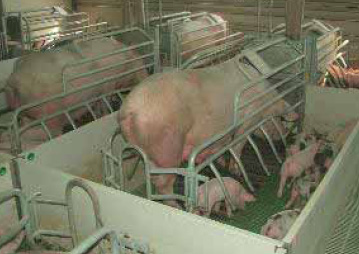
Modern breeding sows are highly productive, but there is still potential to achieve even better results for reproduction. These targets can be made by selecting lines that are particularly robust and which will perform well under a range of environmental conditions.
Reproductive performance in sow lines is affected by several factors. Only 1-3% of the total variation
in sow fertility shown by differences between farm-month averages is due to service sire effects. Genetics account for about 8%. In addition, influences from parity, lactation length and nutrition need to be considered. Topigs found that some 10% of fertility variation may be explained by the environmental aspects relating to farm management and factors such as the season of the year.
Evaluation showed that seasonal effects also affect the reproductive performance of Topigs’ sow lines in Spain and Portugal. Data from 19,359 sows on 28 breeding farms revealed an increase of almost one piglet per insemination from 2005 to 2007. However, a seasonal decrease in results during summer and early autumn could be seen in all three years. The highest number of piglets born per first insemination came from sows inseminated in December.
Seasons obviously differ in terms of temperature as well as in daylight hours. One of the challenges for pig production in Spain and Portugal and other countries with warmer climates is related to higher temperatures in parts of the year. Heat stress is a limiting factor, especially for production in these conditions.
Literature and pig farming handbooks indicate that sows are exposed to heat stress when the temperature exceeds 20SDgrC, which is the upper critical temperature of a sow’s thermo-neutral zone. It is known that heat stress decreases the expression of oestrus behaviour and also alters the way in which ovarian follicles develop; it also compromises oocyte competence and inhibits embryonic development.
Cooling
Management practices such as cooling offer one way of protecting performance during hot seasons. An alternative is to select animals for increased heat tolerance. This selection approach has the advantage that the changes in the genetic composition of the pig population are permanent. Compared with the use of cooling, it is also more sustainable in terms of its impact on the earth’s resources. To investigate the selection possibility in more detail, the Topigs R&D department conducted a study with the aim of estimating the genetic variation in heat tolerance expressed in reproductive traits.
A previous analysis of data from 11,935 sows on 20 farms in Spain, collected from 2003 to 2005, had shown a huge effect of heat stress on farrowing rate and litter size, but also a clear difference between the two sow lines represented. These lines were a Dutch Yorkshire line (DY) used mainly for production in temperate climates and an international Large White line (ILW) producing mostly in warm climates, with their reciprocal crosses.
According to that analysis, the temperature on the day of insemination affected the litter size of ILW-line sows but not their farrowing rate. In contrast, both traits were affected linearly by temperature for the DY-line sows. Another difference was that the decrease in reproductive performance with increasing outside temperature was greater in the DY line than in the ILW line. The result was that, above 22SDgrC, ILW-line sows had a higher reproductive performance than DY-line sows. A first trait affected by heat stress could be farrowing rate, so our next study of sows originating from the same two purebred lines also looked at their farrowing rate as well as litter size according to the maximum outside temperature on the day of insemination. Temperature again had an apparent effect – it seemed that inseminating on a day of 30°C might result in 0.4 fewer piglets per insemination.
Differences
Once more, however, important differences were found in the relationship between temperature and reproductive traits in the two genetically different sow lines. One of the lines showed no influence of temperature on performance, whereas the other suffered a decrease equivalent to 0.1 piglets per degree Celsius rise in temperature. Apparently, therefore, the lines differed in their genetic ability to tolerate heat stress as measured by the differences in reproductive performance. This was valuable information from our point of view, not least because of its indication that there might be a genetic component of heat stress tolerance.
Our estimates of heritability as part of the same study reinforced the idea that genetic selection on sow heat stress tolerance may be possible. The R&D team found large differences in heritability between the sow lines. At 10ºC above the sow’s upper critical temperature, the heritability of heat tolerance with regard to farrowing rate was 0.06 for line DY, but only 0.02 for line ILW. Heat stress had less impact on the litter size of the sows in the study and the heritability estimates relating to heat tolerance of litter size were only 0.03 and 0.01 respectively, but the results in total clearly indicated possibilities for improving sow performance by selecting on heat tolerance.
The team also examined 93,969 insemination and farrowing records from 24,456 sows of the same two lines that were inseminated between January 2003 and July 2008, on 20 farms in Spain and on 13 farms in Portugal. The average farrowing rate across all breeds was 83%. On average, crossbred sows had the highest farrowing rate (86%) and purebred DY-line sows had the lowest (82%). Farrowing rates from an insemination day when the maximum temperature was below 23SDgrC were highest for DY-line sows and lowest for those of the ILW-line. At insemination temperatures above 23SDgrC, however, the farrowing rate of DY-line sows decreased whereas the rates of the ILW-line and crossbred sows stayed similar to their performance at lower temperatures. Heritability estimates for heat tolerance were lowest for ILW-line sows and highest for the crossbreds.
Improvement through breeding
Overall, the available evidence shows that both farrowing rate and heat tolerance are heritable traits and can be improved via breeding. This raises the obvious question of whether these traits can be improved simultaneously without one upsetting the other. The answer is not yet straightforward: although previous studies had shown a negative genetic correlation between heat tolerance and production, in the later examination the correlations between farrowing rate and heat tolerance were found to be close to zero.
It may not be possible to aim for simultaneous improvement; however, there remains an important message in this work. When improving either farrowing rate or litter size without taking heat tolerance into account, this will lead to animals which have high performance but which are more sensitive to heat stress.
The possibility of selecting for heat tolerance is exciting as most genetic selection of pigs takes place currently in nucleus herds located in temperate zones. Commercial pig production occurs all over the world, including hot climates. Selecting sows to be more tolerant of heat must hold out the promise of a further improvement of reproductive results also under those conditions.
This is the approach adopted by the Topigs breeding programme, where heat tolerance is considered constantly in the continuous search for even better production. The programme has already been applying the knowledge gained from this research.
Join 18,000+ subscribers
Subscribe to our newsletter to stay updated about all the need-to-know content in the pigsector, three times a week. Beheer
Beheer

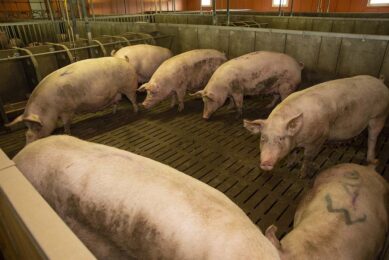
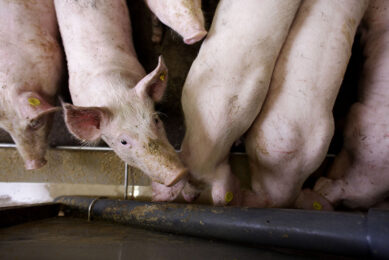
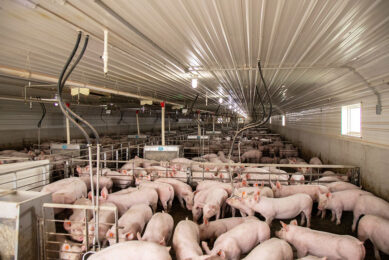
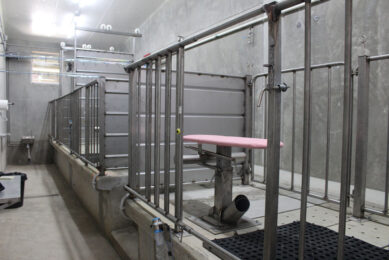





 WP Admin
WP Admin  Bewerk bericht
Bewerk bericht